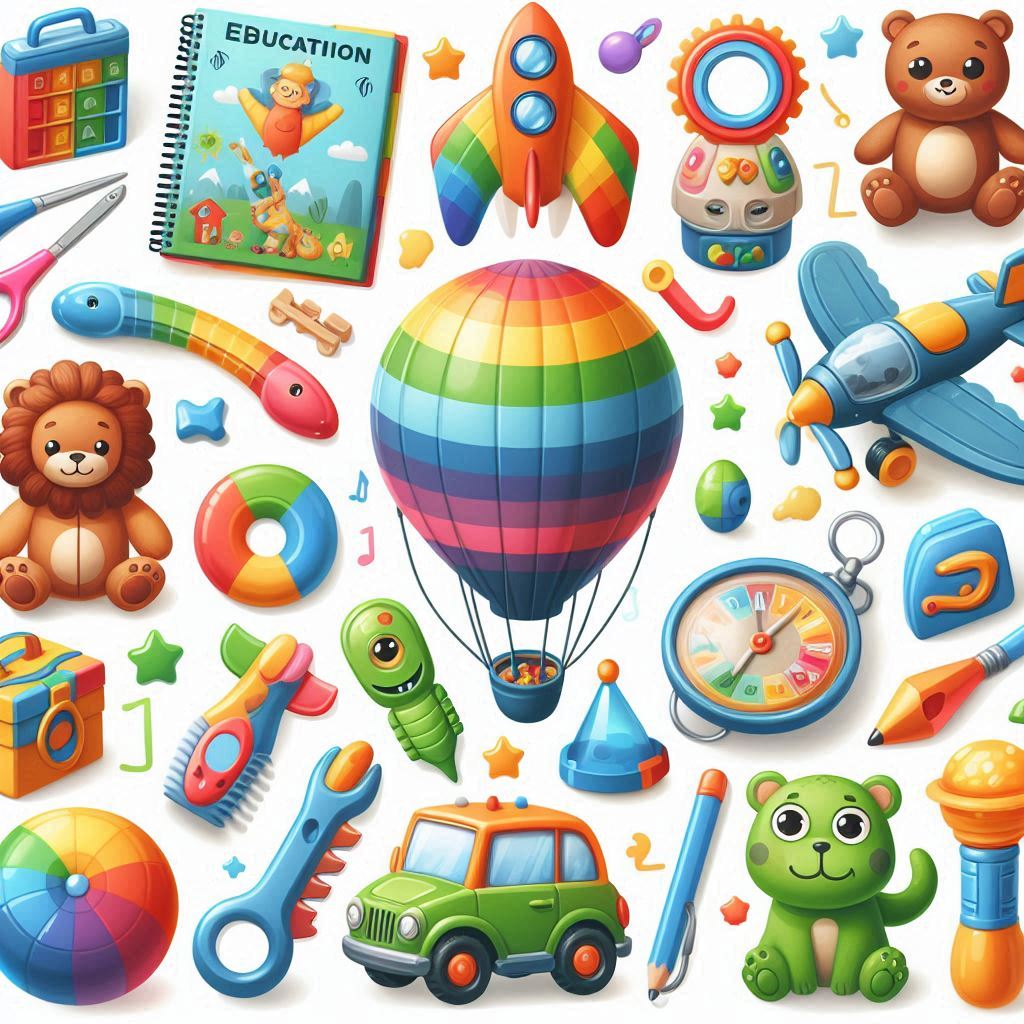In today’s digital age, combining learning with play has never been easier—or more important. Whether you’re a parent, guardian, or teacher, finding the right educational toys and apps can play a major role in your child’s development. These tools spark curiosity, boost brainpower, and make learning fun. In this post, we’ll explore the best educational toys and apps for kids under 10, sorted by age group, and offer expert tips to help you choose the right ones.
Why Educational Toys and Apps Matter for Young Kids
Boosting Brain Development
Children’s brains grow rapidly during their early years. Educational toys help sharpen cognitive functions like memory, problem-solving, and logical thinking. For example, stacking rings and shape sorters help toddlers understand spatial relationships and improve hand-eye coordination.
Encouraging Creativity and Imagination
Toys that allow open-ended play—like building blocks or interactive story apps—let children imagine endless possibilities. This not only improves their creativity but also builds confidence as they explore and create.
Promoting Language and Motor Skills
Toys that include letters, words, and sounds can significantly boost early language development. Apps with sing-alongs or phonics games are excellent for toddlers and preschoolers.
Developing Social and Emotional Intelligence
Board games and role-playing toys encourage sharing, turn-taking, and understanding emotions. These skills are essential for school readiness and long-term success.
Best Educational Toys for Kids Under 10 (By Age Group)
Ages 1–3: Toddler-Friendly Learning Toys
At this age, children learn through sensory exploration. Choose toys that are colorful, textured, and safe to chew!
- Stacking Blocks or Nesting Cups
Teaches cause-and-effect, hand coordination, and colors. - Musical Toys (Xylophones, Drums)
Help develop listening skills and rhythm. - Activity Cubes with Beads, Gears, and Mirrors
Encourage exploration and fine motor skills. - Pop-Up Books and Soft Touch-and-Feel Books
Build a love for reading and stimulate sensory development.
Ages 4–6: Preschool Learning Tools
This is when kids start grasping numbers, letters, and patterns. Focus on toys that introduce academic basics in a fun way.
- Alphabet & Number Puzzles
Promote recognition and early math skills. - Magnetic Drawing Boards
Foster creativity while practicing letters and shapes. - STEM Toys (like Magna-Tiles or Marble Runs)
Introduce engineering and critical thinking in a playful way. - Pretend Play Kits (Doctors, Chefs, Builders)
Develop language, empathy, and real-world skills.
Ages 7–10: Advanced Learning Toys
Older children need more challenging and engaging toys that deepen their critical thinking and creativity.
- LEGO Boost or Robot Kits
Teach basic programming and robotics. - Science Experiment Kits (e.g., slime-making, volcano kits)
Make learning scientific concepts hands-on and fun. - Strategic Board Games (e.g., Chess, Gravity Maze)
Improve planning, patience, and analytical skills. - Puzzle Books and Logic Challenges
Ideal for independent play and skill building.
Best Educational Apps for Kids Under 10
Ages 1–3
- Endless Alphabet
Teaches letters and vocabulary with fun animations. - Sago Mini World
Features adorable characters exploring themes like farming, space, and music. - Peekaboo Barn
Introduces animal names and sounds with cute animations.
Ages 4–6
- ABCmouse
Covers math, reading, science, and art through engaging lessons and games. - Khan Academy Kids
Offers a wide variety of subjects for free with guided paths and fun characters. - Monkey Preschool Lunchbox
Teaches counting, colors, shapes, and more through mini-games.
Ages 7–10
- ScratchJr
Introduces coding logic with drag-and-drop blocks. - Duolingo Kids
Makes language learning (Spanish, French, etc.) interactive and rewarding. - Toca Life World
Encourages storytelling, exploration, and creativity in a digital playground.
How to Choose the Right Educational Toy or App
Match the Child’s Age and Interest
Pick tools that align with your child’s current learning level and passions. A math-obsessed 6-year-old may enjoy a number-based puzzle, while an artistic 8-year-old might prefer creative drawing apps.
Look for Safety and Quality Certifications
Always check if toys are non-toxic, BPA-free, and meet international safety standards. For apps, look for ones without ads or in-app purchases that interrupt learning.
Prefer Open-Ended Toys Over Single-Purpose Ones
Open-ended toys (like building blocks or art kits) can be used in multiple ways, growing with your child’s imagination and skills.
Limit Screen Time and Ensure Supervised Use
Even the best app should be used in moderation. Follow WHO guidelines on screen time and be present to guide interaction when necessary.
Read Reviews and Educator Recommendations
Check platforms like Common Sense Media or parenting forums for trusted reviews and expert recommendations.
Tips for Parents to Maximize Learning
- Integrate Learning into Daily Routines
Turn snack time into a math lesson or bedtime into storytime with purpose. - Encourage Offline Play Too
Mix digital tools with real-world activities like drawing, crafting, and outdoor games. - Rotate Toys and Apps Weekly
Keeps kids interested and avoids overstimulation or boredom. - Set Learning Goals and Celebrate Milestones
Keep motivation high with small rewards and words of encouragement.
Conclusion
Finding the right mix of educational toys and apps can make a world of difference in your child’s learning journey. Whether it’s building a tower of blocks or learning a new word through an app, each small interaction helps shape their future.
Remember, it’s not about the price tag—it’s about engagement, fun, and discovery. Choose age-appropriate, safe, and stimulating tools, and most importantly, spend quality time exploring them with your child.
Did you find this list helpful? Share it with other parents or bookmark it for gift ideas! Want more posts like this? [Subscribe to our blog or follow us on social media]!



